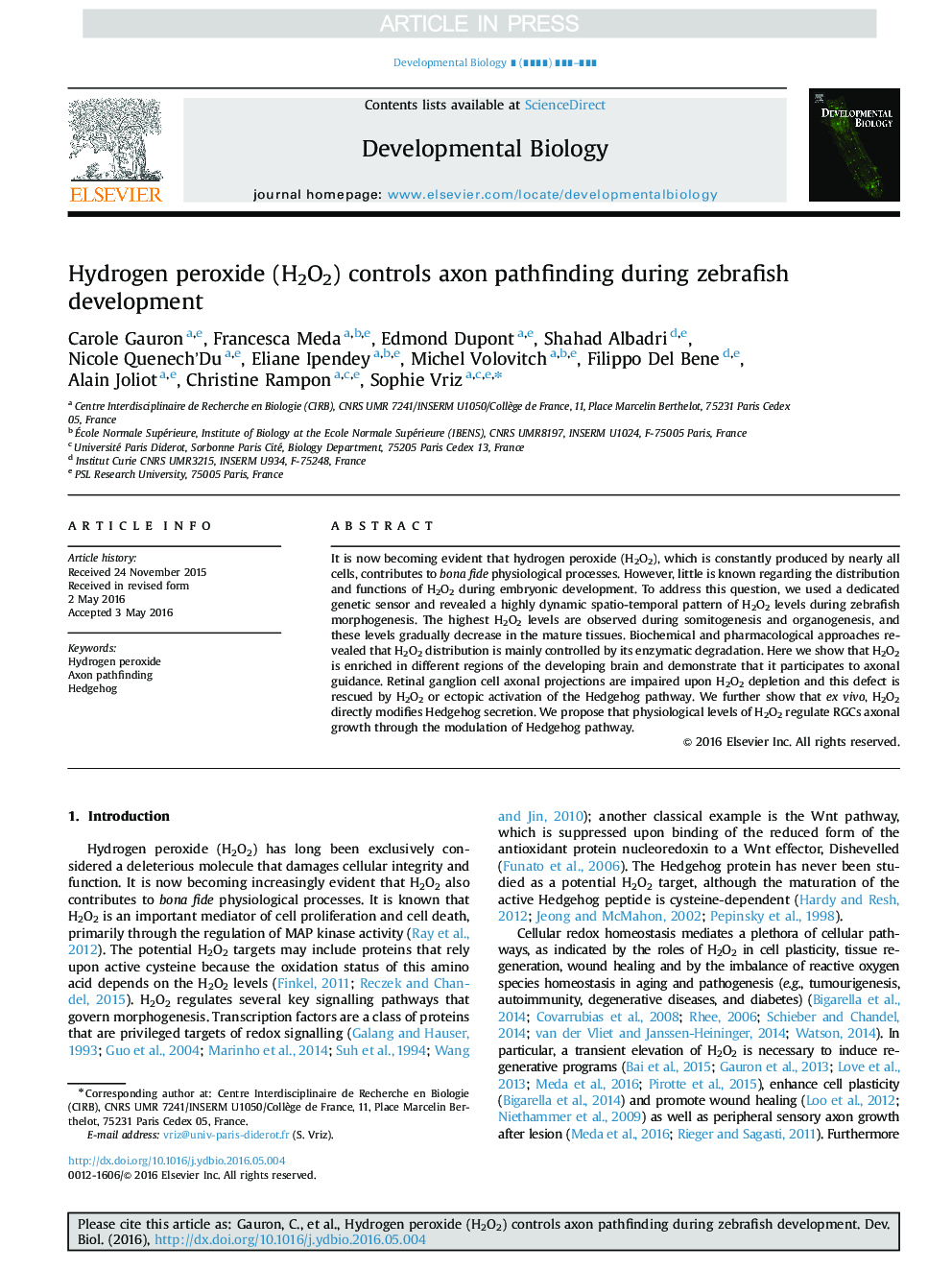| Article ID | Journal | Published Year | Pages | File Type |
|---|---|---|---|---|
| 10931180 | Developmental Biology | 2016 | 9 Pages |
Abstract
It is now becoming evident that hydrogen peroxide (H2O2), which is constantly produced by nearly all cells, contributes to bona fide physiological processes. However, little is known regarding the distribution and functions of H2O2 during embryonic development. To address this question, we used a dedicated genetic sensor and revealed a highly dynamic spatio-temporal pattern of H2O2 levels during zebrafish morphogenesis. The highest H2O2 levels are observed during somitogenesis and organogenesis, and these levels gradually decrease in the mature tissues. Biochemical and pharmacological approaches revealed that H2O2 distribution is mainly controlled by its enzymatic degradation. Here we show that H2O2 is enriched in different regions of the developing brain and demonstrate that it participates to axonal guidance. Retinal ganglion cell axonal projections are impaired upon H2O2 depletion and this defect is rescued by H2O2 or ectopic activation of the Hedgehog pathway. We further show that ex vivo, H2O2 directly modifies Hedgehog secretion. We propose that physiological levels of H2O2 regulate RGCs axonal growth through the modulation of Hedgehog pathway.
Related Topics
Life Sciences
Biochemistry, Genetics and Molecular Biology
Cell Biology
Authors
Carole Gauron, Francesca Meda, Edmond Dupont, Shahad Albadri, Nicole Quenech'Du, Eliane Ipendey, Michel Volovitch, Filippo Del Bene, Alain Joliot, Christine Rampon, Sophie Vriz,
